Hey #doubledocs, check out this new perspective piece out in @JCI_insight : "The national MD-PhD program outcomes
study: Relationships between medical
specialty, training duration, research
effort, and career paths." Summary thread below: lets discuss! 1/ https://insight.jci.org/articles/view/133009">https://insight.jci.org/articles/...
study: Relationships between medical
specialty, training duration, research
effort, and career paths." Summary thread below: lets discuss! 1/ https://insight.jci.org/articles/view/133009">https://insight.jci.org/articles/...
71% of graduates from MD/PhD dual degree programs who are out of training hold positions in academia (57.2%), research institutes or industry (8.2%), or at the NIH or other federal agency (3.2%). Only 24.1% of MD/PhD graduates entered private practice. #doubledocs 2/
Research effort for physician-scientists in academia rarely falls into the idealized 80:20 research/clinical split. Rather it spans the gambit from 0% and 100%. As research effort  https://abs.twimg.com/emoji/v2/... draggable="false" alt="⬇️" title="Downwards arrow" aria-label="Emoji: Downwards arrow">,effort for other activities, esp clinical effort,
https://abs.twimg.com/emoji/v2/... draggable="false" alt="⬇️" title="Downwards arrow" aria-label="Emoji: Downwards arrow">,effort for other activities, esp clinical effort, https://abs.twimg.com/emoji/v2/... draggable="false" alt="⬆️" title="Upwards arrow" aria-label="Emoji: Upwards arrow">. #doubledocs 3/
https://abs.twimg.com/emoji/v2/... draggable="false" alt="⬆️" title="Upwards arrow" aria-label="Emoji: Upwards arrow">. #doubledocs 3/
Wide variation in research effort among academic full-timer (AFT) vs other settings. Ppl in private practice devote the least effort to research, challenging the assumption that they are using their research training to participate in clinical trials. #doubledocs @A_P_S_A 4/
The > the research effort, the > chance that FTA #doubledocs had research funding. This relationship leveled off at ~ 50% research effort. The survey didn& #39;t assess award size, so results are inconclusive if amount of funding continues to  https://abs.twimg.com/emoji/v2/... draggable="false" alt="⬆️" title="Upwards arrow" aria-label="Emoji: Upwards arrow">as research effort
https://abs.twimg.com/emoji/v2/... draggable="false" alt="⬆️" title="Upwards arrow" aria-label="Emoji: Upwards arrow">as research effort  https://abs.twimg.com/emoji/v2/... draggable="false" alt="⬆️" title="Upwards arrow" aria-label="Emoji: Upwards arrow">to >50%. 5/
https://abs.twimg.com/emoji/v2/... draggable="false" alt="⬆️" title="Upwards arrow" aria-label="Emoji: Upwards arrow">to >50%. 5/
This pie chart shows the specialty choice distribution of MD/PhD program graduates who have completed postgraduate training. Nearly 60% trained in internal medicine, pathology, or pediatrics. An additional 25% trained in neurology, surgery, psychiatry, and radiology. 6/
In the national MD-PhD program outcomes study, the cohort that graduated between 1975 and 1984 required 6.69 years on average to complete both degrees. The cohort that graduated between 2005 and 2014 required
8.25 years, a nearly 25% increase. 7/
8.25 years, a nearly 25% increase. 7/
Additionally, the average age at matriculation into an MD-PhD program increased from 21.9 years before 1975 to 23.1 for the cohort graduating 2005–2014.
So, not only are #doubledocs older now when we matriculate, but the time to degrees is longer! Perfect storm for burnout?? 8/
So, not only are #doubledocs older now when we matriculate, but the time to degrees is longer! Perfect storm for burnout?? 8/
Accordingly, the time to first full-time job after completion of postgraduate training (for MD/PhD survey responders whose first position was in either FTA, the NIH, or the industry) is also creeping up. 9/
The mean time to first position for MD/PhD program graduates is specialty dependent. Anesthesiology being the shortest path at 4.7 years and surgery the longest at 7.1 years.
#doubledocs, was this length of training a deciding factor in your specialty choice? 10/
#doubledocs, was this length of training a deciding factor in your specialty choice? 10/
Here are the IM specialties broken down. 70% of MD/PhDs who pursued pulmonary are in academia, it takes 6.5 years on average time to get ones first full time academic position in pulm, and 67.5% of MD/PhD alumni in FTA pulmonary positions have at least 50% research effort. 11/
This has the pediatrics subspecialties broken down by % in academia full time (AFT), average time to first position, and % with at least 50% research effort. #tweetiatrician #doubledocs 12/
Percent of all survey responders out of training who reported ≥ 50% research effort as a function
of GME specialty. 13/
of GME specialty. 13/
There is no evidence that spending more time as an MD-PhD student resulted in greater research effort years later, when alumni became faculty....
Hmm so I should try to graduate ASAP rather than hanging around for a longer PhD.... https://abs.twimg.com/emoji/v2/... draggable="false" alt="😝" title="Face with stuck-out tongue and tightly-closed eyes" aria-label="Emoji: Face with stuck-out tongue and tightly-closed eyes">
https://abs.twimg.com/emoji/v2/... draggable="false" alt="😝" title="Face with stuck-out tongue and tightly-closed eyes" aria-label="Emoji: Face with stuck-out tongue and tightly-closed eyes">
14/
Hmm so I should try to graduate ASAP rather than hanging around for a longer PhD....
14/
The number of MD-PhD program applicants has been remained the same during a time when medical school applications have increased... what can we do about this?? Is the inflated time to degree completion and first job deterring motivated undergrads from this #doubledocs path?

 Read on Twitter
Read on Twitter

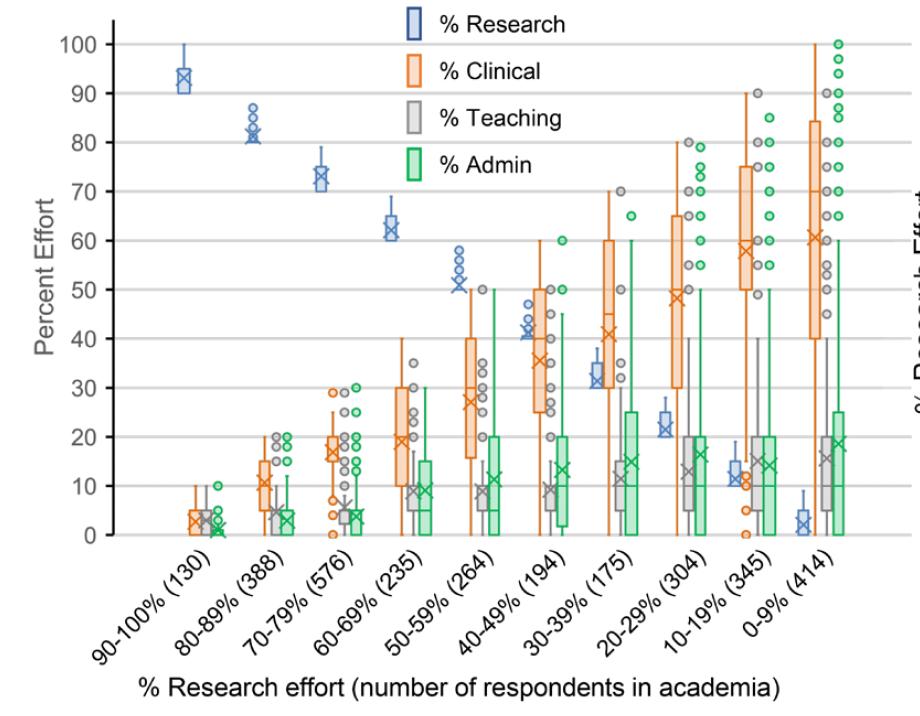 ,effort for other activities, esp clinical effort,https://abs.twimg.com/emoji/v2/... draggable="false" alt="⬆️" title="Upwards arrow" aria-label="Emoji: Upwards arrow">. #doubledocs 3/" title="Research effort for physician-scientists in academia rarely falls into the idealized 80:20 research/clinical split. Rather it spans the gambit from 0% and 100%. As research effort https://abs.twimg.com/emoji/v2/... draggable="false" alt="⬇️" title="Downwards arrow" aria-label="Emoji: Downwards arrow">,effort for other activities, esp clinical effort,https://abs.twimg.com/emoji/v2/... draggable="false" alt="⬆️" title="Upwards arrow" aria-label="Emoji: Upwards arrow">. #doubledocs 3/" class="img-responsive" style="max-width:100%;"/>
,effort for other activities, esp clinical effort,https://abs.twimg.com/emoji/v2/... draggable="false" alt="⬆️" title="Upwards arrow" aria-label="Emoji: Upwards arrow">. #doubledocs 3/" title="Research effort for physician-scientists in academia rarely falls into the idealized 80:20 research/clinical split. Rather it spans the gambit from 0% and 100%. As research effort https://abs.twimg.com/emoji/v2/... draggable="false" alt="⬇️" title="Downwards arrow" aria-label="Emoji: Downwards arrow">,effort for other activities, esp clinical effort,https://abs.twimg.com/emoji/v2/... draggable="false" alt="⬆️" title="Upwards arrow" aria-label="Emoji: Upwards arrow">. #doubledocs 3/" class="img-responsive" style="max-width:100%;"/>
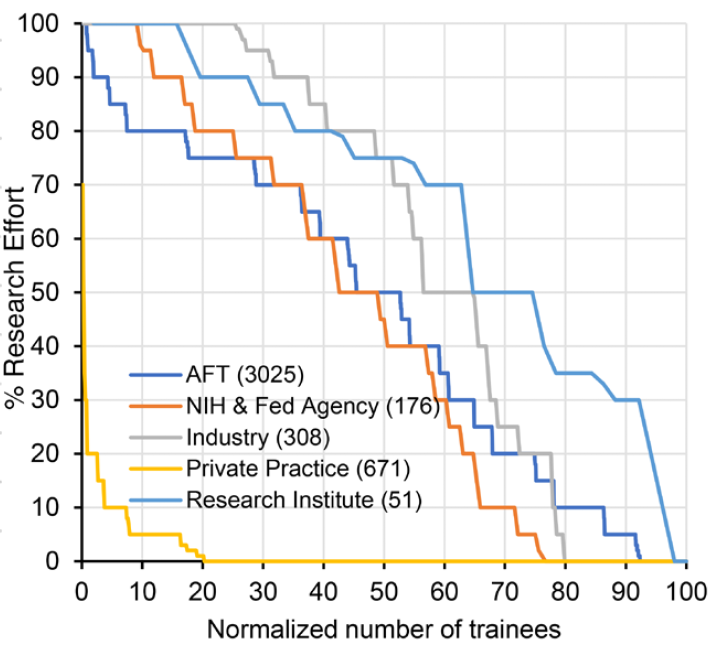
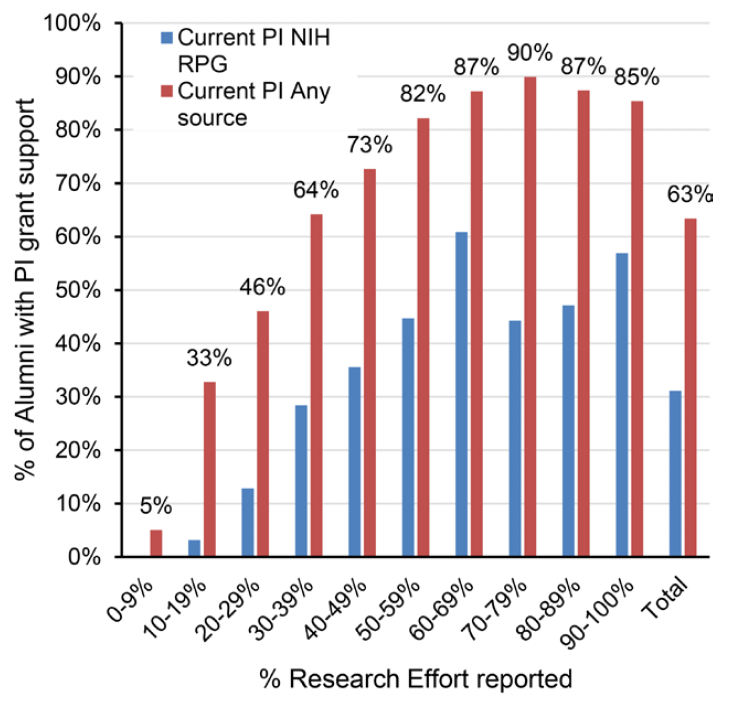 as research effort https://abs.twimg.com/emoji/v2/... draggable="false" alt="⬆️" title="Upwards arrow" aria-label="Emoji: Upwards arrow">to >50%. 5/" title="The > the research effort, the > chance that FTA #doubledocs had research funding. This relationship leveled off at ~ 50% research effort. The survey didn& #39;t assess award size, so results are inconclusive if amount of funding continues to https://abs.twimg.com/emoji/v2/... draggable="false" alt="⬆️" title="Upwards arrow" aria-label="Emoji: Upwards arrow">as research effort https://abs.twimg.com/emoji/v2/... draggable="false" alt="⬆️" title="Upwards arrow" aria-label="Emoji: Upwards arrow">to >50%. 5/" class="img-responsive" style="max-width:100%;"/>
as research effort https://abs.twimg.com/emoji/v2/... draggable="false" alt="⬆️" title="Upwards arrow" aria-label="Emoji: Upwards arrow">to >50%. 5/" title="The > the research effort, the > chance that FTA #doubledocs had research funding. This relationship leveled off at ~ 50% research effort. The survey didn& #39;t assess award size, so results are inconclusive if amount of funding continues to https://abs.twimg.com/emoji/v2/... draggable="false" alt="⬆️" title="Upwards arrow" aria-label="Emoji: Upwards arrow">as research effort https://abs.twimg.com/emoji/v2/... draggable="false" alt="⬆️" title="Upwards arrow" aria-label="Emoji: Upwards arrow">to >50%. 5/" class="img-responsive" style="max-width:100%;"/>
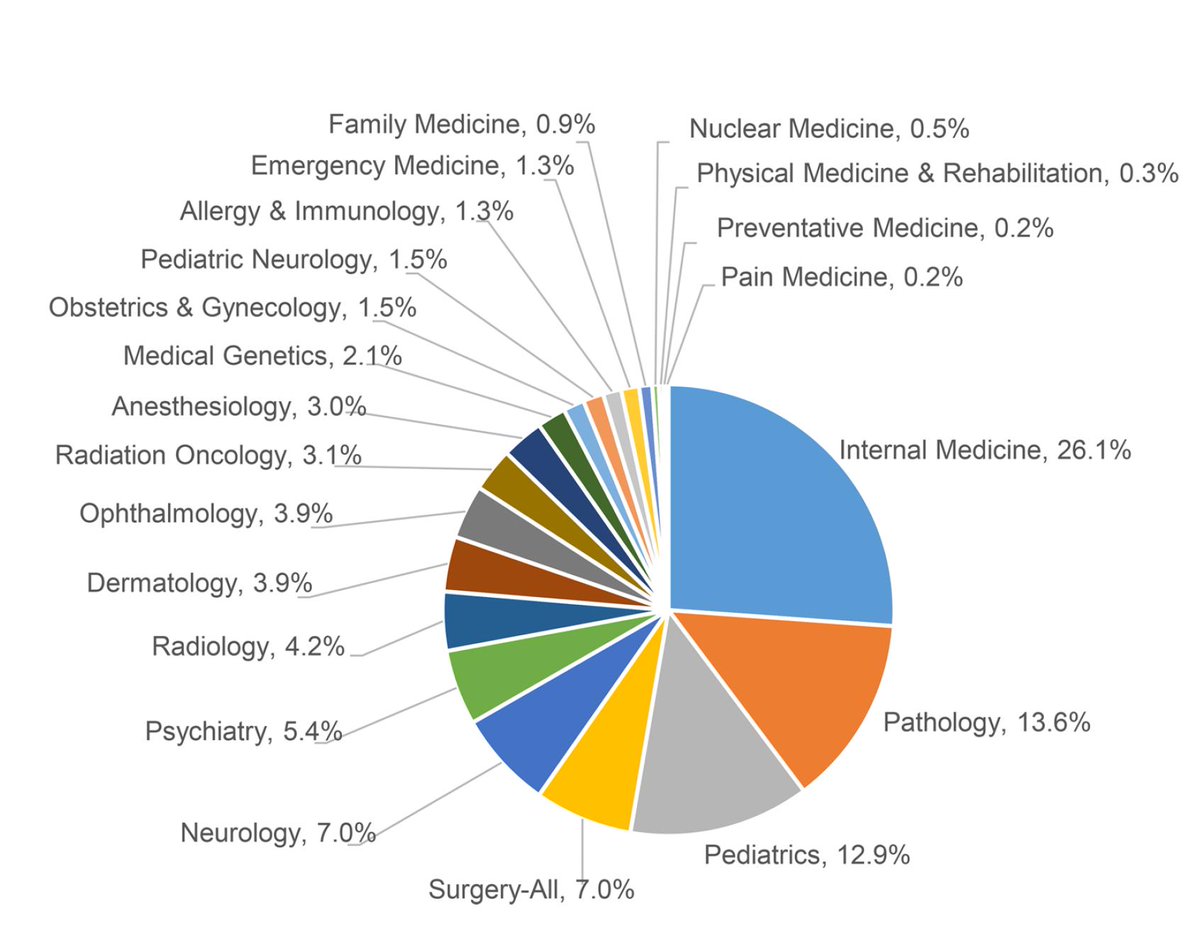



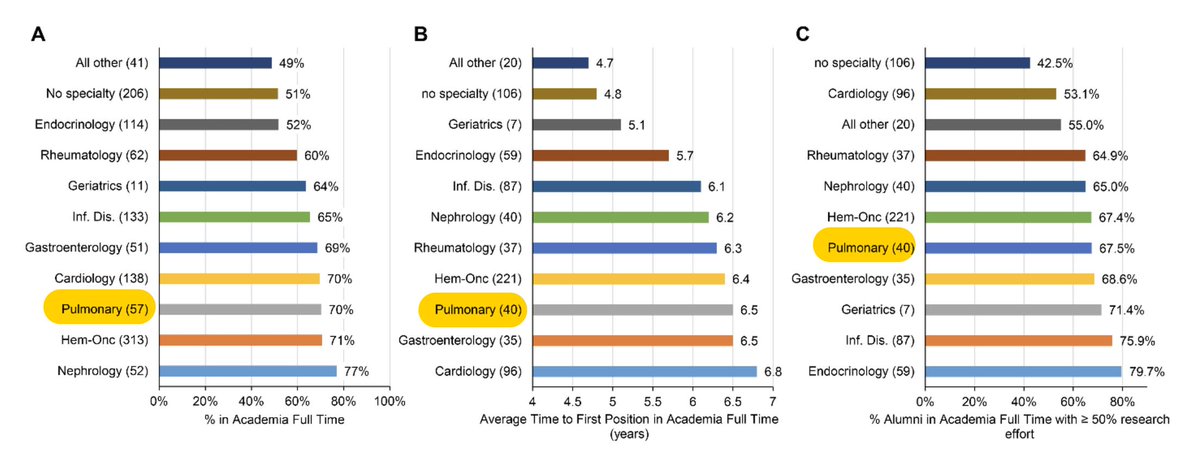
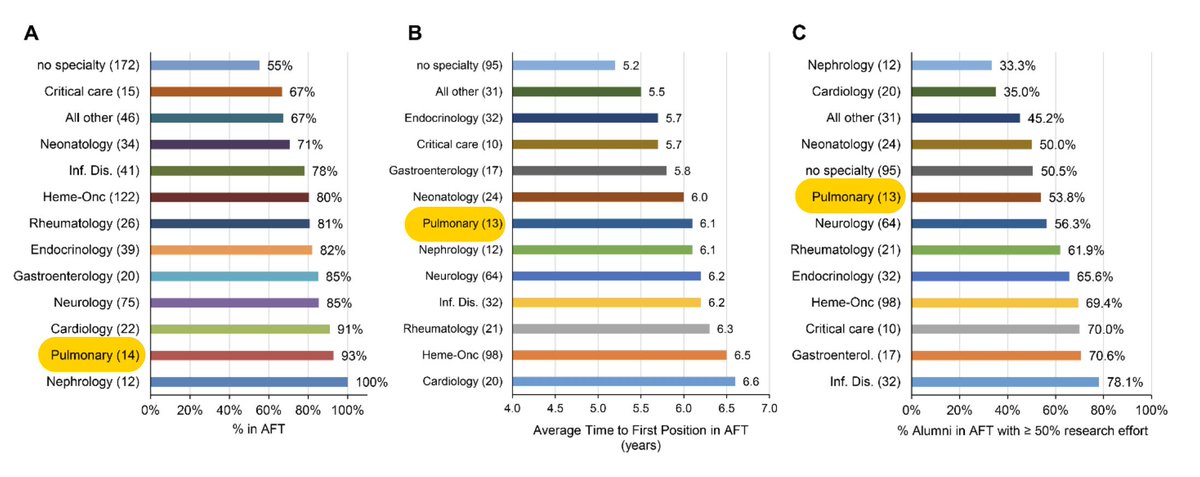

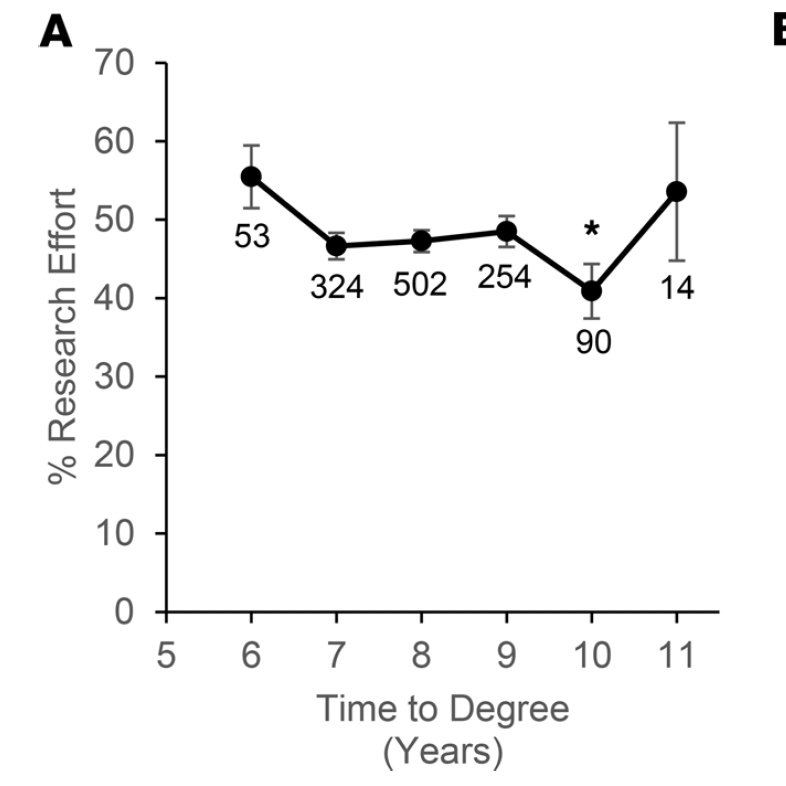 14/" title="There is no evidence that spending more time as an MD-PhD student resulted in greater research effort years later, when alumni became faculty....Hmm so I should try to graduate ASAP rather than hanging around for a longer PhD.... https://abs.twimg.com/emoji/v2/... draggable="false" alt="😝" title="Face with stuck-out tongue and tightly-closed eyes" aria-label="Emoji: Face with stuck-out tongue and tightly-closed eyes">14/" class="img-responsive" style="max-width:100%;"/>
14/" title="There is no evidence that spending more time as an MD-PhD student resulted in greater research effort years later, when alumni became faculty....Hmm so I should try to graduate ASAP rather than hanging around for a longer PhD.... https://abs.twimg.com/emoji/v2/... draggable="false" alt="😝" title="Face with stuck-out tongue and tightly-closed eyes" aria-label="Emoji: Face with stuck-out tongue and tightly-closed eyes">14/" class="img-responsive" style="max-width:100%;"/>


